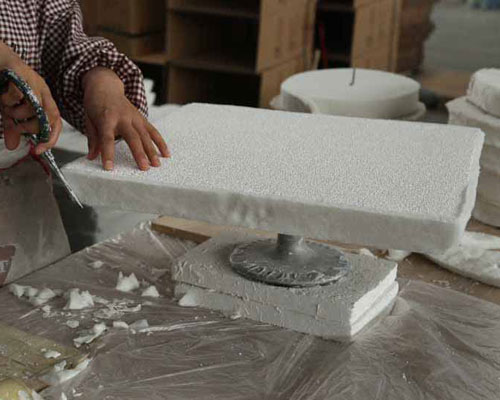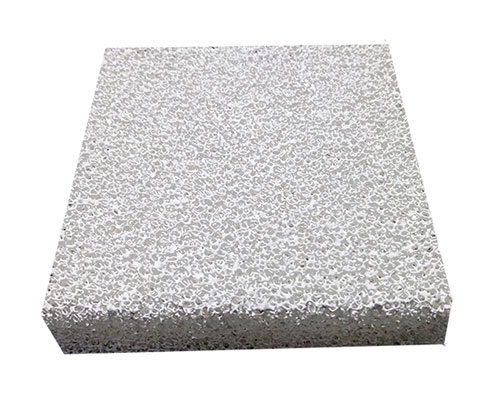The filtering efficiency of ceramic foam molten Al filters to remove inclusions from molten aluminum mainly depends on the roughness of the openings formed in the aggregated mesh member and the configuration of the mesh member. Therefore, particularly in order to remove fine inclusion particles of about 10 to 25 μm, the aggregated mesh member needs to have 2 or more meshes per linear inch.
Molten Al Filters Manufacturing
In order to manufacture the molten Al filters, aggregates such as ceramics are formed into a net shape and baked to obtain an aggregate net-like member. Then, the aggregated mesh member is impregnated with any one or more of the aforementioned coating compounds to coat its surface. When an adhesive is used, the mesh member is sequentially impregnated with the adhesive and the coating compound. Alternatively, it is impregnated with a mixture of coating compound and binder.
In any case, due to the original physical properties of the coating compound and the adhesive, the impregnating material used to impregnate the mesh member exhibits a relatively high viscosity. The higher the viscosity of the impregnating material and the finer the mesh of the aggregated mesh member, the more difficult the coating process becomes.
Especially, in fact, it is necessary to completely cover not only the outer surface of the mesh member, but also the inner surface of its opening (hole). Even if these surfaces are located in the center of the mesh member, it is impossible to completely cover the entire mesh member surface.

Therefore, when the conventional coating composition is applied to the molten Al ceramic foam filter, the coating efficiency with respect to the entire surface of the mesh member is low, so that the internal filter has low efficiency in removing impurities in each filter unit. This low removal efficiency may prevent the internal filter from being applied to the molten aluminum filtration.
When the aggregated net-like member is coated with sodium silicate carbonate to form an internal filter, the resulting filter has the advantage that it can be wound even without using any adhesive. The silicate is directly coated on the surface of the mesh member to ensure a firm bond between the coating compound and the surface of the mesh member, thereby resisting the impact strength and bonding strength of the molten aluminum flow. Even when the mesh member has two or more meshes per linear inch, a compound such as sodium silicate can be sufficiently covered. In addition, due to the center of the inner surface of the opening formed on the aggregate mesh member or the center of the entire surface of the aggregate mesh member, the removal rate of inclusions per unit filter volume and unit weight of the filter increases. In particular, molten Al ceramic foam filters can significantly improve the removal rate of fine inclusion particles of about 10 to 25 μm.

